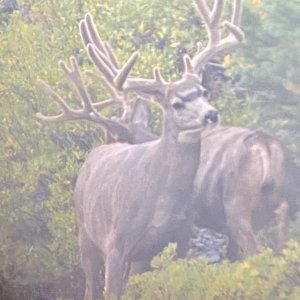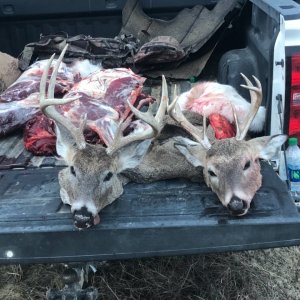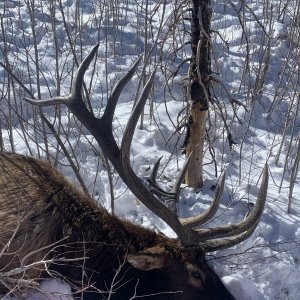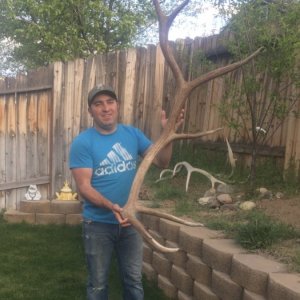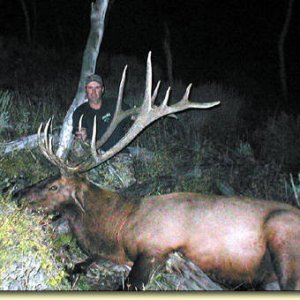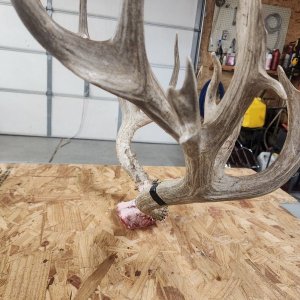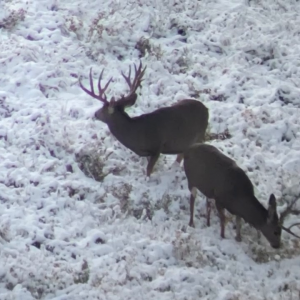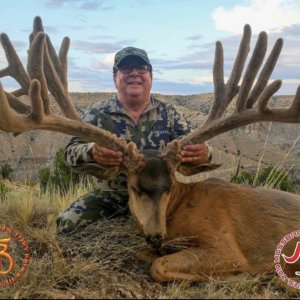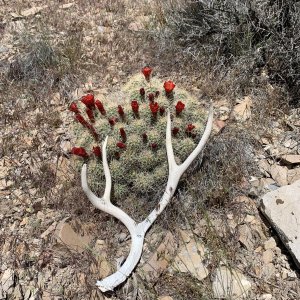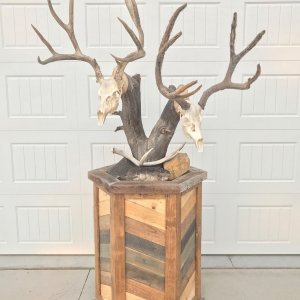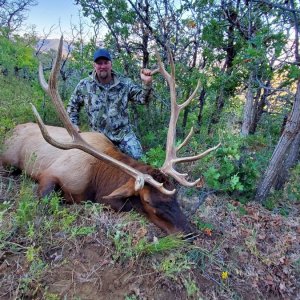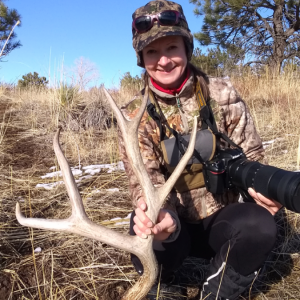lostinOregon
Very Active Member
- Messages
- 2,006
I have been around for years, but mostly lurk instead of posting. I have been watching the SFW/MDF and conservation group debate heating up for the last several years. I am hoping to get folks to think a little bit about a bigger picture. The economy is our biggest enemy right now, let me explain.
As all of you know we have been in a long term depression for a lack of better terms. As a result of this continued depression I have notices that several states are increasing their tag numbers even though the numbers don't support the increase. Only one state that I have observed responded to the bad winter of 08 and that is Colorado, and many of you debate if it was enough.
The economy has affected the states ability to affectively manage game properly. So, most states run on a 2 year budget cycle. In the past, before the depression, generally speaking, taxes kept pace with increases in personal services. Personal services are usually about 70% of an agencies budget because people are the most expensive line item. So to maintain a current service level, (CSL) agency budgets have to increase anywhere from 8 to 12 percent in this economy.This increase has outpaced tax increases with unemployment at such a high level we have reached a breaking point for most state agencies. Health care and retirement costs are the biggest drivers. The retirement systems of the states are not currently funded at 100% due to the stock market not returning historical investment percentages and everyone knows about the health care debate. States are working on reducing benefits associated with employee costs but it won't be enough. Oregon initieated furlough days, cuts to retirement systems and pay part of your healthcare so that is not the whole solution.
State fish and game agencies generally compete for their funds in the legislature against schools, economic developement and human services. Wildlife doesn't compete in that environment. We blame the state agencies but there is no way they are going to beat the lobbys for school, business and the social welfare system. Watch your legislative session this year in your home state. Watch the bus loads of kids that the schools send to the legislature each year as part of their marketing campaign.
So the only option left is to cut services, or increase revenue, hence the tag increases and the fleecing of non-residents across the west. Didn't Arizona just raise there elk quotas which have been conservative over the years. What happened in Nevada last year on the deer tag numbers. Did Wyoming adjust tag numbers after the bad winter of 08? Should I conintue, Oregon, Idaho, Wyoming.....
IMHO opinion this is trend is going to continue until the economy improves. I am not optimistic as forecasts show a slow increase over time, but not the boom that is needed.
So when we debate if SFW is going to keep getting the tags for the expo, I can tell you they will because it is tied into politics and economic development now. The business world of SLC has their fingers in the tag pie now because of the motels, tourism in the city associated with the expo. No going back now, no matter what. Who are the legislators going to listen to, a non resident or a business that throws in a campaign contribution to the legsilator that keeps the tags at the Expo in SLC. We as hunters are the most un-organized lobby out there in the political world.
I know this will be controversial but our biggest ally in the political world in protecting wildlife is landowners. They are organized across the west and can get things done. As an example the Colorado land owner voucher program which will increase their allotment this year int he legislature even though we post until we are blue in the face about how outragous this is. We should allign with the groups that have the same agenda as we do.
So, when tags continue to increase, not supported by the resource or at a level that doesn't allow a healthy herd what is the solution. It will be 37 below in Gunnison this week. Is the winter range in good enough condition to sustain the deer if this continues? I am sure that MDF and groups are too busy counting how many tags they have instead of preparing to step in if needed. I have lost faith that the conservation organizations are transparent and are in it for the right reasons, mule deer.
SFW, MDF, RMF are too busy fighting each other to pay attention to the big problem. A divided hunting community is the easiest to conquer.
Please look down the road 10 years and tell me how we are going to save mule deer. I am passionate about mule deer and each year I get more and more concerned about their future. Thanks for listening, good luck in the draws,
Rich
As all of you know we have been in a long term depression for a lack of better terms. As a result of this continued depression I have notices that several states are increasing their tag numbers even though the numbers don't support the increase. Only one state that I have observed responded to the bad winter of 08 and that is Colorado, and many of you debate if it was enough.
The economy has affected the states ability to affectively manage game properly. So, most states run on a 2 year budget cycle. In the past, before the depression, generally speaking, taxes kept pace with increases in personal services. Personal services are usually about 70% of an agencies budget because people are the most expensive line item. So to maintain a current service level, (CSL) agency budgets have to increase anywhere from 8 to 12 percent in this economy.This increase has outpaced tax increases with unemployment at such a high level we have reached a breaking point for most state agencies. Health care and retirement costs are the biggest drivers. The retirement systems of the states are not currently funded at 100% due to the stock market not returning historical investment percentages and everyone knows about the health care debate. States are working on reducing benefits associated with employee costs but it won't be enough. Oregon initieated furlough days, cuts to retirement systems and pay part of your healthcare so that is not the whole solution.
State fish and game agencies generally compete for their funds in the legislature against schools, economic developement and human services. Wildlife doesn't compete in that environment. We blame the state agencies but there is no way they are going to beat the lobbys for school, business and the social welfare system. Watch your legislative session this year in your home state. Watch the bus loads of kids that the schools send to the legislature each year as part of their marketing campaign.
So the only option left is to cut services, or increase revenue, hence the tag increases and the fleecing of non-residents across the west. Didn't Arizona just raise there elk quotas which have been conservative over the years. What happened in Nevada last year on the deer tag numbers. Did Wyoming adjust tag numbers after the bad winter of 08? Should I conintue, Oregon, Idaho, Wyoming.....
IMHO opinion this is trend is going to continue until the economy improves. I am not optimistic as forecasts show a slow increase over time, but not the boom that is needed.
So when we debate if SFW is going to keep getting the tags for the expo, I can tell you they will because it is tied into politics and economic development now. The business world of SLC has their fingers in the tag pie now because of the motels, tourism in the city associated with the expo. No going back now, no matter what. Who are the legislators going to listen to, a non resident or a business that throws in a campaign contribution to the legsilator that keeps the tags at the Expo in SLC. We as hunters are the most un-organized lobby out there in the political world.
I know this will be controversial but our biggest ally in the political world in protecting wildlife is landowners. They are organized across the west and can get things done. As an example the Colorado land owner voucher program which will increase their allotment this year int he legislature even though we post until we are blue in the face about how outragous this is. We should allign with the groups that have the same agenda as we do.
So, when tags continue to increase, not supported by the resource or at a level that doesn't allow a healthy herd what is the solution. It will be 37 below in Gunnison this week. Is the winter range in good enough condition to sustain the deer if this continues? I am sure that MDF and groups are too busy counting how many tags they have instead of preparing to step in if needed. I have lost faith that the conservation organizations are transparent and are in it for the right reasons, mule deer.
SFW, MDF, RMF are too busy fighting each other to pay attention to the big problem. A divided hunting community is the easiest to conquer.
Please look down the road 10 years and tell me how we are going to save mule deer. I am passionate about mule deer and each year I get more and more concerned about their future. Thanks for listening, good luck in the draws,
Rich

